Welcome to Virtual Reality
April, 2019
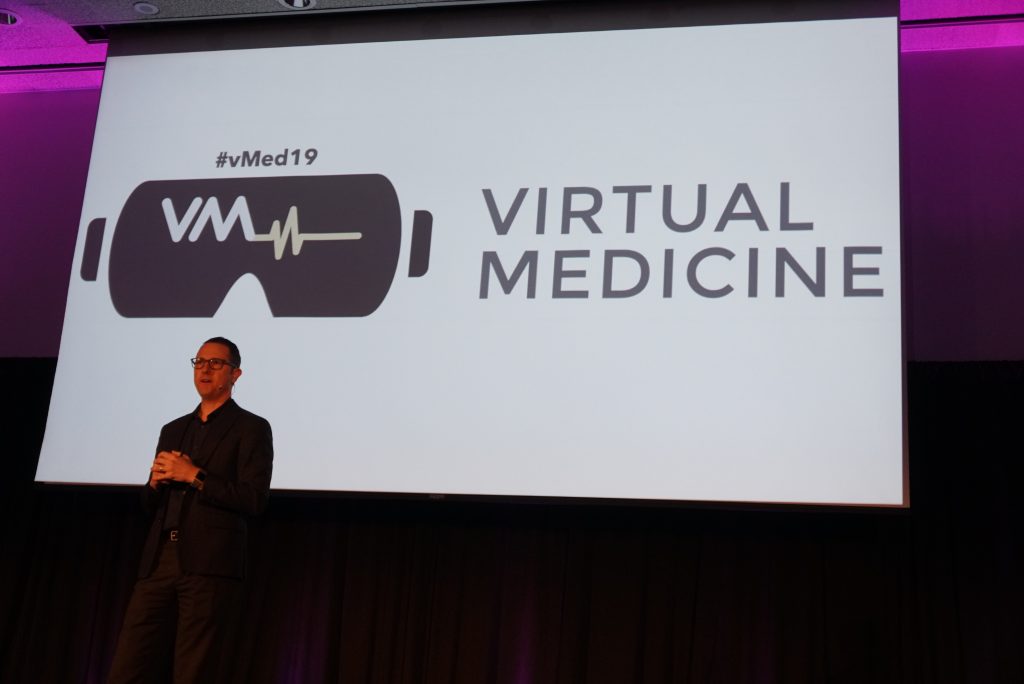
In my long life, I’ve witnessed several major technological revolutions.
In my early music years of the early 1960’s, all musical instruments were acoustic. Then in the late sixties, Jimi Hendrix led the way to an electric guitar revolution, and music was changed forever. The Hammond B3 organ was an electrified companion to the electric guitar and bass which continue to dominate Rock & Roll and Rhythm & Blues.
In the late 70’s and early 80’s came synthesizers. Beyond electric guitars and basses, a magic world of electronic musical instruments (including electronic winds, percussion, and keyboards) expanded the palette of musical possibilities. I’ll never forget the recording session in which I was first informed that I had just played with an electronic drum “machine”, that to me had sounded and felt like a live human player.
Computers in the late 80’s were the next life-changing new technology. They changed my awareness and my lifestyle, as well as anyone on the north side of the Digital Divide.
The 90’s witnessed the rise of the internet.

Now in 2019, Virtual Reality has arrived! An example of the most sophisticated form of VR technology is the Flight Simulator, used by airlines and the military to train pilots in a setting that mimics as much as possible the actual experience of piloting an airplane. NASA (the National Aeronautics and Space Administration) has used VR technology for years to train astronauts.
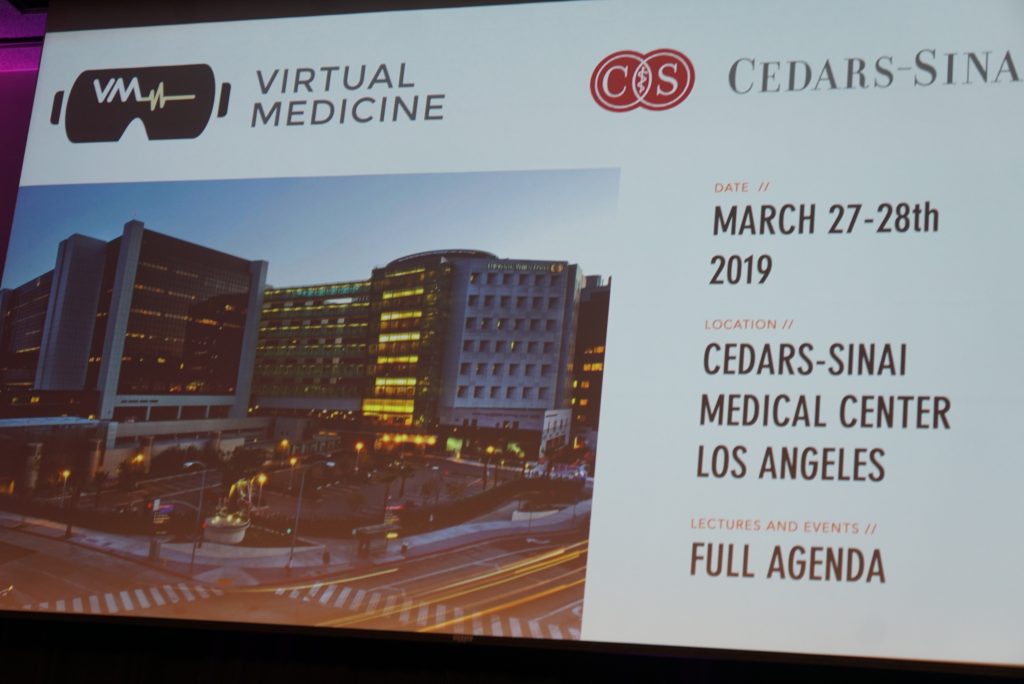
Recently, March 2019, I attended a conference in Los Angeles at Cedars-Sinai Hospital about Virtual Reality in Healthcare. Healing Healthcare Systems had a display for demonstration of our VR software in development, named CARE VRx.
The term Virtual Reality (VR) has slowly been replaced by the newer term XR, which encompasses Virtual Reality (VR), a realistic facsimile of reality, Altered Reality (AR), which features computer-generated figures and environments, and Mixed Reality (MR), a combination of the other two. This conference was mind-blowing in terms of the emerging uses still being discovered and expanded of this revolutionary new expression of technological magic.
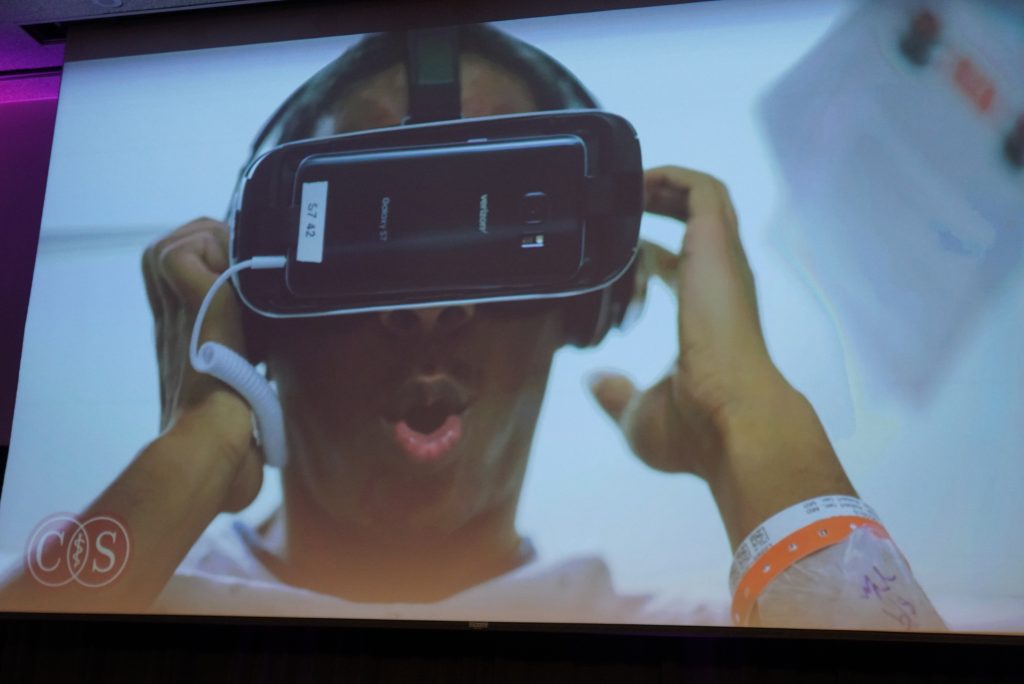
I’m proud of Healing Healthcare Systems having worked for the last few years to develop our own VR app, an extension of The CARE Channel, providing music and a 360-degree nature environment. We didn’t see any other company producing a similar product to ours at this time. Just as HHS pioneered the use of nature and music delivered through the television, we are now pioneering this environmental tool as a VR 360-degree app. VR is termed an “immersive” technology. I certainly experience it that way. Ideally, I would prefer to experience VR while sitting on a swivel stool, which would allow me to turn fully around 360 degrees without getting dizzy.
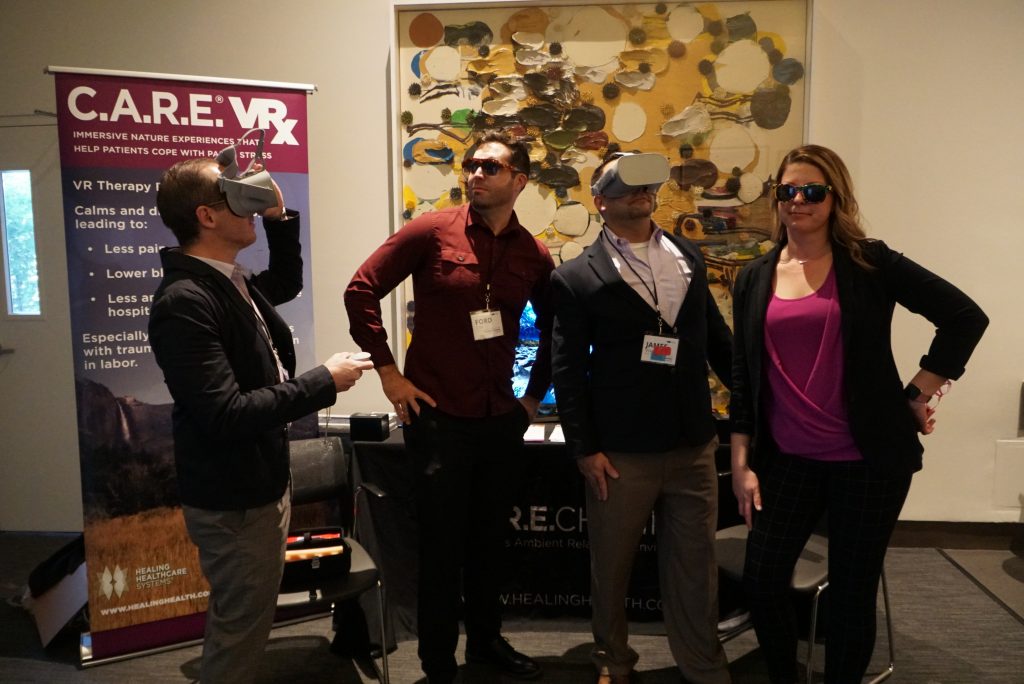
I have experienced dizziness and nausea from using VR. This happens mainly through motion video. The psyche reacts physically to the twists and turns of dynamic video such that one can feel sick or nauseous without actually moving. For this reason, our CARE VRxshows only video scenes shot from a stationary camera placement. The viewer can then move around the visual environment at his/her own pace.
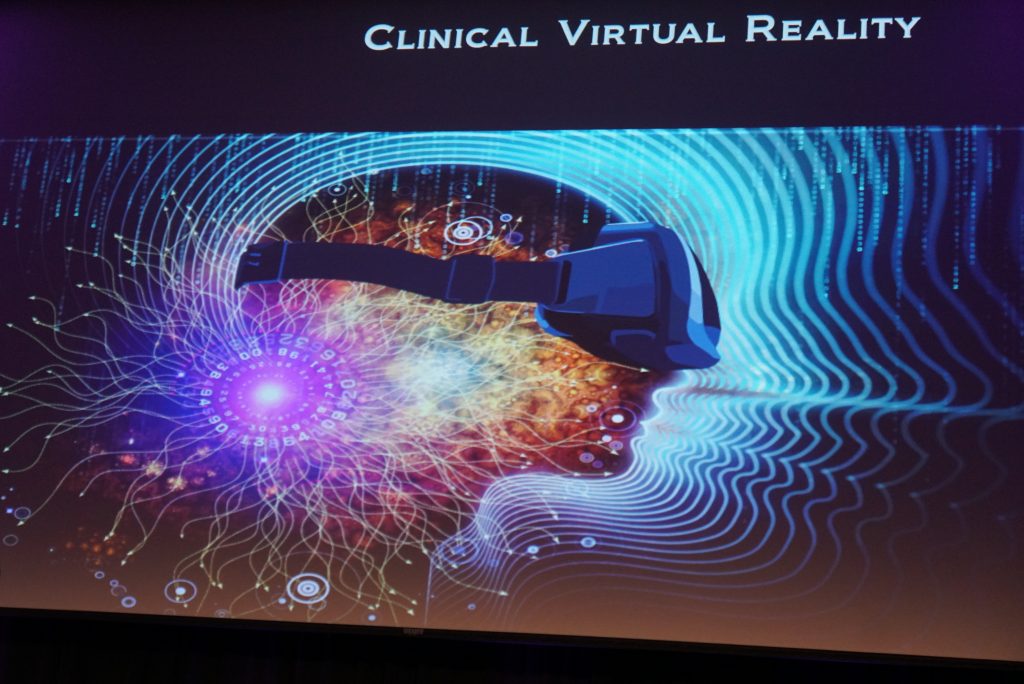
The VR in Healthcare conference was very stimulating in terms of the future predictions and projections of uses for XR technologies. Headline speakers during the conference included pioneers in the field, who over thirty years ago had started to develop VR when computers were still primitive, bulky, and expensive. A prototype headset cost many thousand dollars. Now, one can buy an excellent video headset with sound for under $300. We can assume that the technology will get cheaper as it continues to advance and evolve technically.

Here are some other ways of using XR discussed at the conference:
- Instructional VR for surgeons: Wearing VR headsets, surgical students can practice surgical procedures while viewing actual surgeries. They can practice any procedure dozens of times, whereas traditionally, medical students could only practice on cadavers, a few times at most. Cadavers are very expensive.
- There is a macho culture within the military such that it is considered a disgrace to show vulnerability, complain of pain, or admit to psychic wounds. Therapists have discovered that soldiers suffering from PTSD (Post Traumatic Stress Disorder) will open up to an Altered Reality Avatar programmed to act human than to a live therapist.
- I tuned in via VR to a live interview and gathering in Dubai. Viewers could create personal “avatars” i.e. computer-generated figures to represent individuals around the world. And then through the live-streamed connections, viewers can pose questions to the person being interviewed in Dubai or wherever.
- VR can be used as a physical exercise coach, similar to the formerly popular WI, a game-playing exercise technology. The VR app can record data for later review by a physician or therapist.
- VR has been used for several years as a tool for real estate agents to show properties, enabling one to walk through houses without having to actually visit them in person. Likewise, a VR video of a room can be modified via AR to show different colors, décor, furniture, etc., all images generated through software.
- Telemedicine uses VR for long-distance medical consultations, diagnosis, and supervised treatments, in which the doctor may be far removed from the patient being treated.
- Finally, there is Google Earth, created by Google that allows one to travel practically anywhere in the world and fly overhead and finally to fly through the city landscape down at street level. This is truly and amazing Google product. Google Earth is a grand visionary creation on the same ambitious level as Google’s attempts to digitize, and thus preserve, all great works of literature and art.

It was a conference led by futurists, each of whom gave their vision of the future of XR: VR, AR, & MR. I felt privileged to be able to experience this exposition of the future of Virtual Reality in all its manifestations. It demonstrates the power of technology to affect our perceptions, transporting us to different environments, demanding our full attention, which is characteristic of “immersive” technologies.

I sat on the front row in the auditorium at Cedars-Sinai Hospital, where I was able to photograph many of the PowerPoint slides being presented by the various speakers. Below is a sampling of them. Behold, the Future!


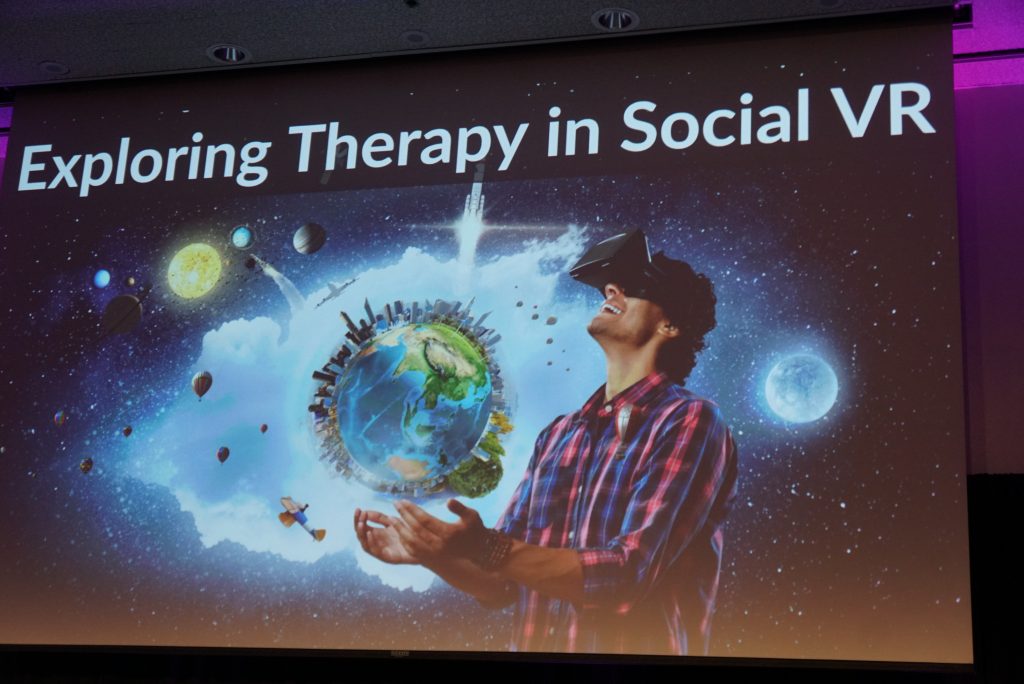
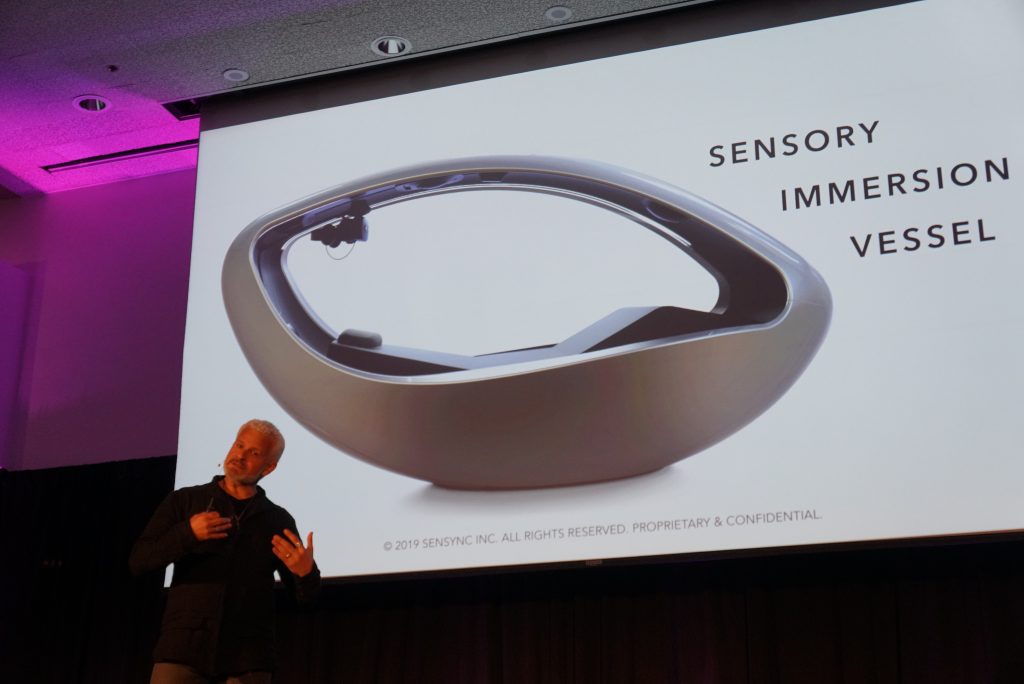
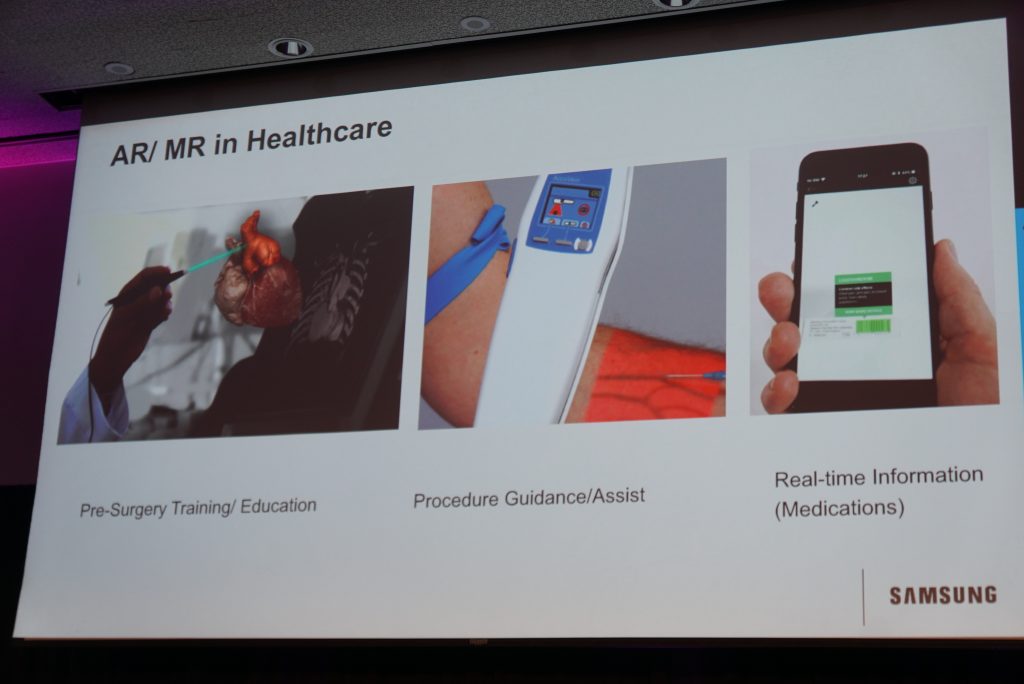
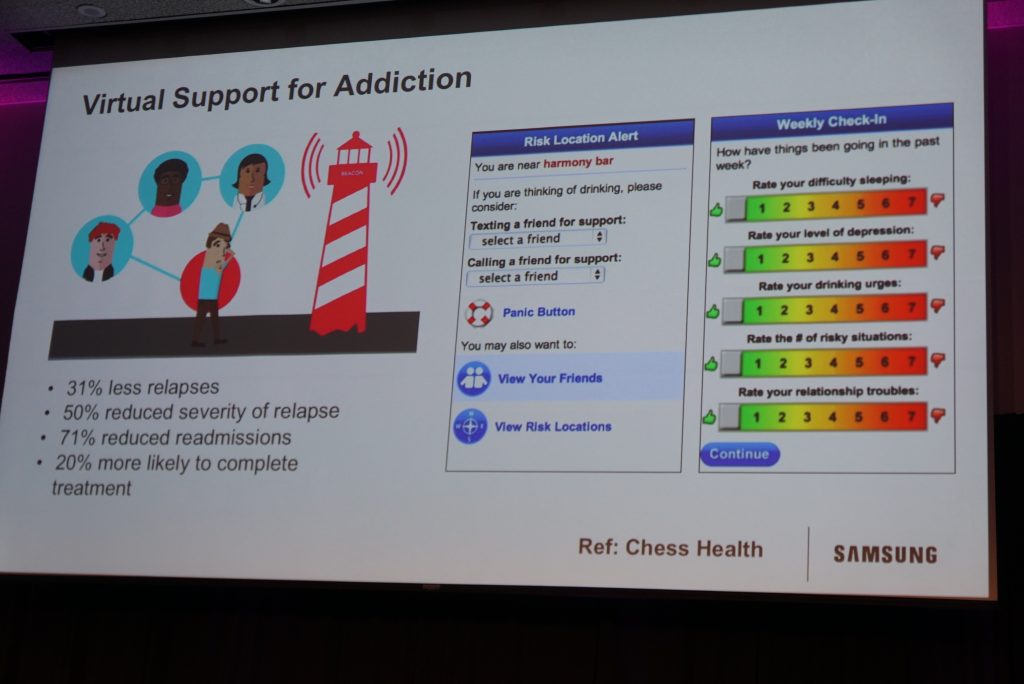





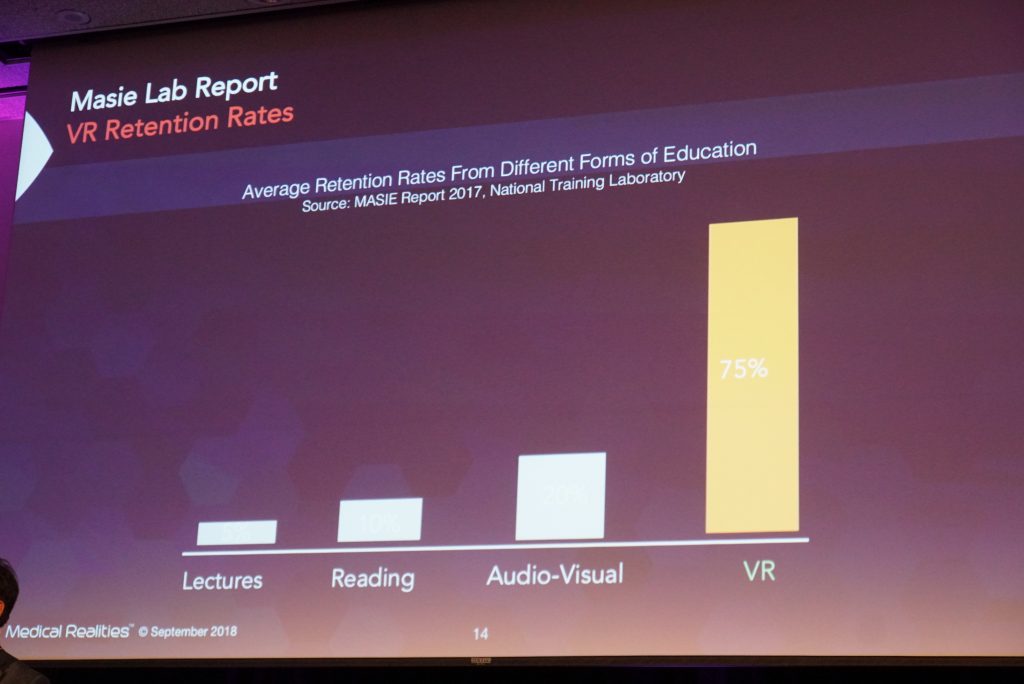
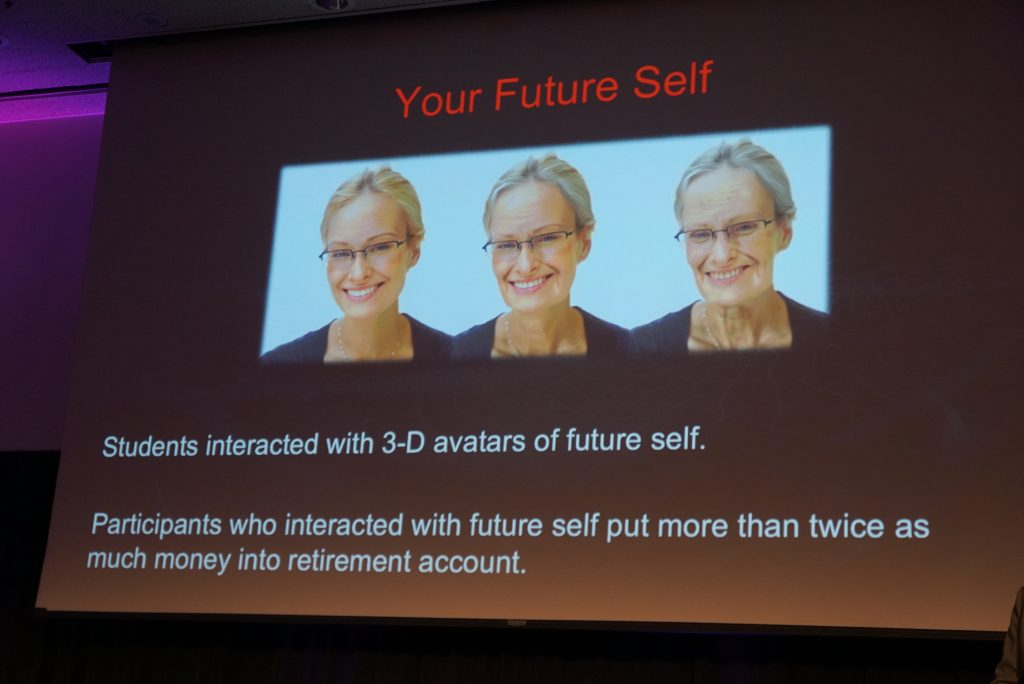
0 Comments on Welcome to Virtual Reality
Join the Conversation